Private Flights: A Luxurious and Efficient Travel Option
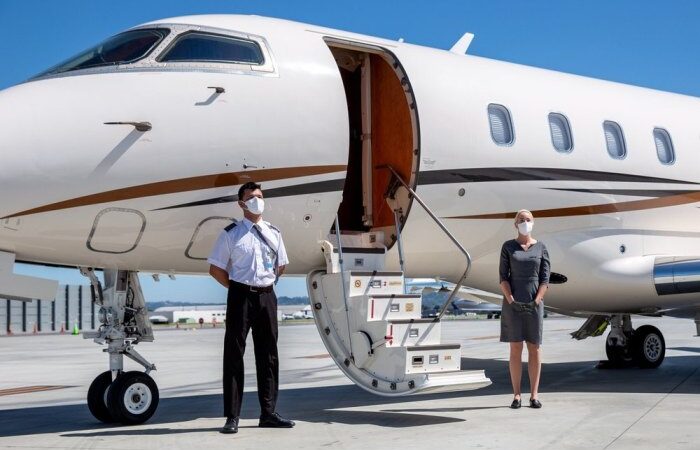
Private flights offer a world of convenience and luxury, transcending the limitations of commercial air travel. Whether you’re a busy executive seeking seamless travel or a discerning traveler desiring personalized service, private flights provide a tailored experience that prioritizes comfort, privacy, and efficiency.
From the moment you step onto the tarmac to your arrival at your destination, private aviation delivers a level of service and exclusivity that sets it apart.
The appeal of private flights extends beyond mere luxury. Private aircraft provide unparalleled flexibility, allowing travelers to customize their itineraries and choose their preferred departure and arrival times. With no waiting lines, security checks, or crowded terminals, private flights streamline the travel process, saving precious time and maximizing productivity.
Furthermore, the ability to fly directly to smaller airports and private airstrips opens up a world of exclusive destinations and unique travel experiences.
The Appeal of Private Flights
Private flights offer a unique and luxurious travel experience, appealing to those seeking unparalleled convenience, comfort, and privacy. Unlike commercial airlines, private flights provide a personalized journey tailored to individual needs and preferences, catering to a discerning clientele seeking a seamless and exclusive travel experience.
Advantages of Private Flights
Private flights offer a range of advantages that distinguish them from commercial air travel. These benefits encompass factors like time-saving, enhanced comfort, and personalized service.
- Time Efficiency: Private flights eliminate the need for airport check-in lines, security screenings, and baggage claim delays. Travelers can arrive at their destination swiftly and directly, saving valuable time and maximizing productivity.
- Personalized Service: Private flights provide a dedicated and personalized experience, with a dedicated flight crew catering to individual preferences and needs. Passengers can enjoy tailored services, including customized menus, entertainment options, and on-board amenities.
- Enhanced Comfort: Private jets offer spacious cabins with luxurious seating arrangements, ensuring a comfortable and relaxing journey. Passengers can enjoy ample legroom, comfortable seating, and access to private restrooms.
- Flexibility and Convenience: Private flights offer unparalleled flexibility, allowing travelers to choose their departure and arrival times and destinations. They can bypass congested airports and access smaller, private airstrips, providing greater convenience and privacy.
- Increased Safety: Private flights adhere to rigorous safety standards and operate with experienced pilots and maintenance crews. They often fly on direct routes, minimizing potential delays and disruptions and, contributing to a safer and more reliable travel experience.
Factors Contributing to the Popularity of Private Flights
The increasing popularity of private flights can be attributed to several factors, including growing affluence, technological advancements, and changing travel preferences.
- Rising Affluence: The global rise in wealth and disposable income has fueled demand for luxury goods and services, including private air travel. Affluent individuals and businesses seek exclusive and convenient travel options to enhance their lifestyle and productivity.
- Technological Advancements: Advancements in aviation technology have made private flights more accessible and affordable. The development of smaller, more fuel-efficient jets and innovative scheduling platforms has reduced operational costs and expanded the reach of private aviation.
- Shifting Travel Preferences: Travelers are increasingly seeking personalized and hassle-free experiences. Private flights cater to this demand by offering a seamless and customized journey, allowing travelers to control their itinerary and travel on their terms.
- Increased Business Travel Demand: Private flights offer a significant advantage for business travelers, enabling them to maximize their time and productivity. They can conduct meetings and negotiations on board, reducing travel time and enhancing efficiency.
- Safety and Security Concerns: Private flights offer a higher level of safety and security, with reduced exposure to crowds and potential health risks associated with commercial air travel. This is particularly appealing to individuals with health concerns or security requirements.
Typical Clientele and Motivations
The typical clientele for private flights includes high-net-worth individuals, business executives, celebrities, and families seeking a luxurious and convenient travel experience. Their motivations for choosing private flights often stem from:
- Time Optimization: Business executives and entrepreneurs often prioritize time efficiency and utilize private flights to maximize their productivity. They can conduct meetings, prepare for presentations, and manage their businesses while in transit, saving valuable time and increasing efficiency.
- Privacy and Discretion: Celebrities, high-profile individuals, and those seeking privacy often choose private flights to avoid public scrutiny and maintain a sense of anonymity. Private flights provide a discreet and secure travel experience, ensuring their privacy is respected.
- Luxury and Comfort: Affluent travelers often prioritize luxury and comfort. Private flights offer spacious cabins, personalized services, and high-end amenities, providing a premium travel experience that caters to their discerning tastes.
- Flexibility and Convenience: Families and groups traveling together often choose private flights for their flexibility and convenience. They can travel on their schedule, avoid crowded airports, and access smaller, private airstrips, ensuring a seamless and stress-free journey.
- Safety and Security: Individuals with health concerns, security requirements, or those seeking a safer travel experience often opt for private flights. Private jets adhere to rigorous safety standards and operate with experienced crews, providing a higher level of safety and security.
Types of Private Flights
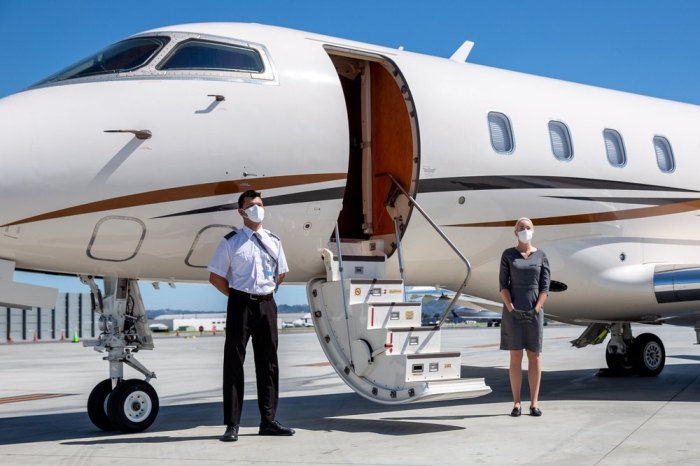
Private flights offer a unique and personalized travel experience, catering to diverse needs and preferences. The type of aircraft you choose will significantly impact your journey, influencing factors such as cost, speed, and comfort.
Private Jets
Private jets are synonymous with luxury and convenience. They offer unparalleled flexibility and privacy, allowing you to travel on your schedule and avoid the hassles of commercial air travel. Private jets encompass a wide range of models, from small, single-engine aircraft to large, long-range jets capable of crossing continents.
They are typically classified by their size, range, and passenger capacity.
Types of Private Jets
- Very Light Jets (VLJs): These are the smallest and most affordable private jets, typically seating 4-6 passengers. They are perfect for short-haul flights and offer a more economical option for smaller groups.
- Light Jets: These jets offer slightly more space and range than VLJs, typically seating 6-8 passengers. They are ideal for domestic flights and some international destinations.
- Mid-Size Jets: These jets provide a significant increase in space and comfort, typically seating 8-12 passengers. They are suitable for longer-haul flights and offer a more luxurious experience.
- Heavy Jets: These are the largest and most luxurious private jets, typically seating 12-16 passengers. They offer exceptional range and comfort, making them ideal for transatlantic and transcontinental flights.
- Ultra-Long-Range Jets: These jets are designed for the ultimate in luxury and convenience, offering unparalleled range and comfort. They are typically equipped with spacious cabins, multiple sleeping areas, and advanced entertainment systems.
Advantages of Private Jets
- Flexibility and Convenience: Private jets allow you to travel on your schedule, avoiding the constraints of commercial airline schedules. You can fly directly to your destination, eliminating the need for layovers and connecting flights.
- Privacy and Security: Private jets offer a high level of privacy and security, allowing you to travel without the distractions and potential security risks of commercial air travel.
- Comfort and Luxury: Private jets provide a luxurious travel experience, with spacious cabins, comfortable seating, and personalized service. You can enjoy amenities such as private bathrooms, kitchens, and entertainment systems.
- Time Savings: Private jets can significantly reduce travel time, allowing you to arrive at your destination faster and more efficiently.
Disadvantages of Private Jets
- Cost: Private jets are significantly more expensive than commercial air travel, with hourly rates ranging from a few thousand dollars to tens of thousands of dollars.
- Availability: Private jets may not be available on short notice, as they are often booked in advance.
- Maintenance: Private jets require regular maintenance, which can add to the overall cost of ownership.
Turboprops
Turboprops are a type of aircraft that uses a propeller driven by a turboprop engine. They offer a balance of speed and affordability, making them a popular choice for regional and short-haul flights.
Advantages of Turboprops
- Cost-Effective: Turboprops are significantly more affordable to operate than private jets, making them a more economical option for shorter flights.
- Speed: Turboprops are faster than traditional propeller aircraft, offering a more efficient travel experience.
- Versatility: Turboprops can operate from smaller airports, offering greater flexibility in terms of destination options.
Disadvantages of Turboprops
- Noise: Turboprops can be significantly noisier than private jets, which may be a consideration for some passengers.
- Limited Range: Turboprops have a shorter range than private jets, making them unsuitable for long-haul flights.
Helicopters
Helicopters offer a unique and versatile mode of transportation, providing access to destinations that are inaccessible by other means. They are commonly used for sightseeing, air ambulance services, and transportation to remote locations.
Advantages of Helicopters
- Versatilit y: Helicopters can land and take off from a variety of locations, including rooftops, open fields, and water.
- Speed: Helicopters can travel at relatively high speeds, especially in urban areas where traffic congestion is a factor.
- Scenic Views: Helicopters offer stunning views from above, making them an ideal choice for sightseeing tours.
Disadvantages of Helicopters
- Cost: Helicopters are generally more expensive to operate than other types of private aircraft.
- Weather Limitations: Helicopters are susceptible to adverse weather conditions, which can limit their operating range.
- Limited Passenger Capacity: Helicopters typically have a limited passenger capacity, making them unsuitable for larger groups.
Private Flight Services
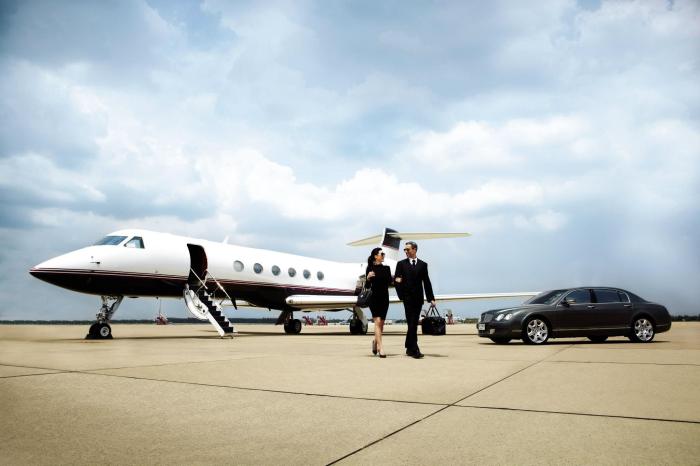
Private flight operators offer a variety of services to cater to different needs and budgets. Understanding the options available can help you choose the most suitable service for your travel requirements.
Charter Flights
Charter flights are a popular option for those seeking flexibility and convenience. They involve renting an entire aircraft for a specific flight, allowing you to customize your itinerary and travel on your schedule.
- Advantages:
- Flexibility: You can choose your departure and arrival times, as well as the route you want to take.
- Privacy: You and your companions have exclusive use of the aircraft, ensuring a more private and comfortable travel experience.
- Convenience: You can avoid the hassles of commercial airports, such as long security lines and crowded terminals.
- Personalization: You can choose the type of aircraft that best suits your needs, including the amenities and services you desire.
- Disadvantages:
- Cost: Charter flights are typically more expensive than commercial flights, especially for smaller groups.
- Availability: Finding an available aircraft can be challenging, particularly during peak travel seasons.
Fractional Ownership
Fractional ownership involves purchasing a share of an aircraft, granting you access to the aircraft for a predetermined number of hours per year.
- Advantages:
- Cost-effectiveness: Fractional ownership can be more affordable than outright ownership, especially for those who fly frequently.
- Access to a private aircraft: You have access to a dedicated aircraft, allowing you to enjoy the benefits of private travel.
- Management services: Fractional ownership providers typically handle aircraft maintenance, hangar storage, and flight operations.
- Disadvantages:
- Commitment: Fractional ownership requires a significant financial investment and a long-term commitment.
- Limited flexibility: Your flight hours are restricted to your allotted share, and you may not be able to fly whenever you want.
Jet Cards
Jet cards are prepaid flight programs that offer access to a network of private jets for a set price per hour.
- Advantages:
- Flexibility: Jet cards offer more flexibility than fractional ownership, allowing you to fly whenever you need to.
- Cost predictability: You know the price per flight hour upfront, making it easier to budget for your travel expenses.
- Wide range of aircraft options: Jet card providers typically offer a variety of aircraft types to choose from.
- Disadvantages:
- Limited flight hours: Jet card programs typically have a limited number of flight hours available per year.
- Potential blackout dates: Some providers may restrict flight availability during peak travel seasons.
Booking a Private Flight
Booking a private flight can be a straightforward process, but it requires careful planning and consideration.
- Determine your travel needs: Consider your destination, travel dates, number of passengers, and any special requirements.
- Choose a private flight operator: Research reputable operators and compare their services, aircraft availability, and pricing.
- Request a quote: Provide the operator with your travel details to receive a personalized quote.
- Confirm your flight: Once you’ve chosen an operator and agreed to the terms, confirm your flight and make any necessary arrangements.
- Prepare for your flight: Gather your travel documents, pack your bags, and arrive at the designated departure point on time.
The Private Flight Experience: Private Flights
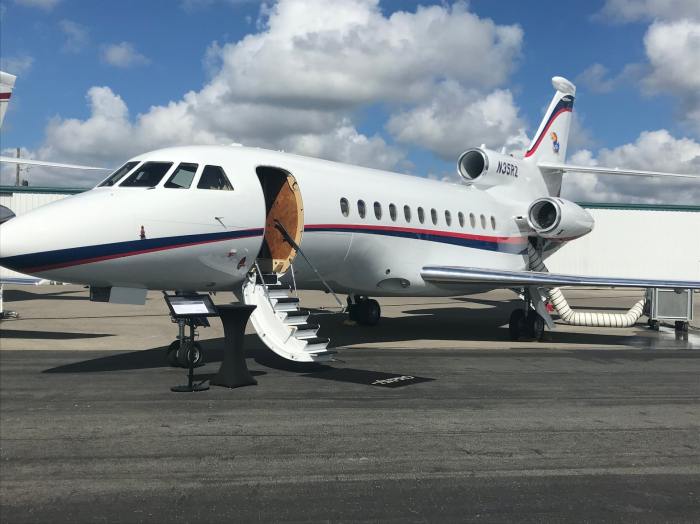
Private flights offer a level of luxury and convenience that surpasses commercial travel. From the moment you step onto the tarmac to your arrival at your destination, the private flight experience is designed to cater to your individual needs and preferences.
Boarding and Amenities
Boarding a private flight is a seamless and personalized experience. You are greeted by a dedicated flight attendant who will guide you through the process. The private terminal or hangar is typically located in a less crowded area of the airport, providing a more exclusive and relaxed atmosphere.
You can expect a shorter security line and less waiting time. Private aircraft offer a range of amenities depending on the size and type of the plane. Some common amenities include:
- Comfortable leather seats with ample legroom and recline
- Private cabins with separate seating areas and beds
- On-demand entertainment systems with movies, music, and games
- High-speed Wi-Fi connectivity
- Gourmet meals and beverages prepared by a private chef
- Bathrooms with showers and amenities
Personalized Service and Customized Experience
Private flight operators prioritize providing personalized service and a customized experience for their passengers. You can tailor your flight itinerary to your specific requirements, including:
- Flexible scheduling: You can choose your departure and arrival times to suit your schedule.
- Destination flexibility: You can fly to smaller airports and private airstrips that are not accessible by commercial airlines.
- Personalized in-flight services: You can request specific meals, beverages, entertainment options, and even in-flight activities.
- Dedicated flight attendants: You have a dedicated team of professionals who cater to your every need throughout the flight.
Unique Destinations and Activities
Private flights provide access to unique destinations and activities that are not readily available through commercial airlines. Here are some examples:
- Exploring remote islands: Private flights allow you to reach secluded islands and atolls that are not served by commercial airlines, offering an exclusive and adventurous experience.
- Visiting private game reserves: You can fly directly to private game reserves in Africa or South America, enjoying the ultimate safari experience with personalized service and access to remote areas.
- Attending exclusive events: Private flights can transport you to private concerts, sporting events, and other exclusive gatherings with ease and convenience.
- Skiing in the Alps: You can fly directly to private ski resorts in the Alps, enjoying the ultimate luxury ski vacation with private transportation and access to exclusive slopes.
The Cost of Private Flights
Private flights offer unparalleled convenience and luxury, but their cost is a significant factor for many travelers. The price of a private flight is influenced by various factors, including the type of aircraft, distance traveled, and time of year. This section will delve into the cost of private flights, providing an estimated range for different types of flights and exploring potential cost savings compared to commercial airlines.
Factors Influencing the Cost of Private Flights
The cost of a private flight is determined by several factors that contribute to the overall expense. These factors include:
- Aircraft Type: The size and type of aircraft are the primary determinants of cost. Larger, more luxurious jets, such as Gulfstream G650ER or Bombardier Global 7500, come with higher price tags due to their advanced features, fuel consumption, and maintenance costs.Smaller private jets, like the Cessna Citation CJ4 or Embraer Phenom 300, are more affordable but offer fewer amenities and a shorter range.
- Distance: The distance traveled directly impacts the cost of a private flight. Longer flights require more fuel, which increases the overall expense. Shorter flights, within a few hundred miles, are typically more cost-effective.
- Time of Year: The seasonality of travel can influence flight costs. Peak travel periods, such as holidays and summer months, often see higher demand, leading to increased prices. Conversely, off-season travel tends to be more affordable.
- Number of passengers: The number of passengers onboard also affects the cost. A flight with fewer passengers will be more expensive per person than a flight with a full capacity.
- Flight Duration: The duration of the flight can influence the cost. Longer flights require more fuel and crew time, increasing the overall expense.
- Route Complexity: The complexity of the flight route, including layovers and stopovers, can also impact the cost. Flights with multiple stops or complex routing patterns may be more expensive due to additional fuel, crew time, and landing fees.
- Catering and Amenities: Additional services like catering, in-flight entertainment, and other amenities can add to the overall cost of a private flight.
Estimated Cost Range for Private Flights
Providing a precise cost for private flights is challenging due to the varying factors involved. However, there is a general cost range for different types of private flights:
| Aircraft Type | Estimated Cost per Hour | Estimated Cost for a 500-mile Flight |
|---|---|---|
| Light Jets (e.g., Cessna Citation CJ4) | $2,000
|
$10,000
|
| Mid-Size Jets (e.g., Embraer Phenom 300) | $3,000
|
$15,000
|
| Heavy Jets (e.g., Gulfstream G650ER) | $7,000
|
$35,000
|
| Ultra-Long-Range Jets (e.g., Bombardier Global 7500) | $10,000
|
$50,000
|
Note:These estimates are approximate and can vary significantly based on factors such as specific route, time of year, and additional services.
Potential Cost Savings of Private Flights
While private flights are undeniably expensive, they can offer potential cost savings in certain scenarios, especially for groups of travelers or businesses:
- Time Savings: Private flights eliminate the need to wait in airport lines, go through security checks, and navigate crowded airports. This time saving can be valuable for business travelers who need to maximize their productivity or for families with young children.
- Flexibility: Private flights offer greater flexibility in terms of departure and arrival times. Travelers can choose their schedules and avoid the constraints of commercial airline schedules.
- Convenience: Private flights provide a more personalized and comfortable experience. Passengers can enjoy amenities like spacious cabins, in-flight catering, and personalized service.
- Privacy: Private flights offer a higher level of privacy and security. Passengers can avoid the crowds and potential distractions of commercial flights.
Safety and Security

Private aviation is renowned for its high safety standards and stringent security measures. This commitment to safety is paramount, ensuring a secure and comfortable journey for passengers.
Safety Protocols and Security Measures, Private flights
Private aviation employs comprehensive safety protocols and security measures to safeguard passengers and aircraft. These measures are designed to mitigate risks at every stage of the flight, from pre-flight preparations to landing.
- Aircraft Maintenance and Inspection s: Private aircraft undergo rigorous maintenance schedules and inspections to ensure they meet the highest safety standards. These inspections are performed by certified technicians who adhere to strict regulations and guidelines.
- Pilot Qualifications and Training: Private pilots undergo extensive training and must possess the necessary licenses and certifications to operate aircraft. They undergo regular proficiency checks and training to maintain their skills and knowledge.
- Security Screening: Passengers and baggage are subject to thorough security screening before boarding. This includes checks for prohibited items and potential threats, similar to those implemented at commercial airports.
- Flight Operations Monitoring: Flight operations are closely monitored by air traffic control and other aviation authorities. This ensures compliance with safety regulations and provides real-time situational awareness.
Safety Record of Private Flights
Private aviation boasts an exceptional safety record. The National Transportation Safety Board (NTSB) reports that the accident rate for general aviation (which includes private flights) is significantly lower than that of commercial airlines.
“The accident rate for general aviation in the United States has been consistently lower than the accident rate for commercial airlines over the past several decades.”
National Transportation Safety Board (NTSB)
This lower accident rate is attributed to several factors, including rigorous safety protocols, experienced pilots, and meticulous aircraft maintenance practices.
Privacy and Security of Passengers
Private aviation prioritizes passenger privacy and security.
- Private Terminals: Many private aviation operators offer access to exclusive private terminals, minimizing contact with the general public and enhancing privacy.
- Personalized Flight Plans: Private flights offer flexibility in scheduling and routing, allowing passengers to avoid crowded airports and busy air routes. This contributes to a more private and secure travel experience.
- Controlled Access: Private aircraft have controlled access, with only authorized personnel and passengers permitted onboard. This minimizes the risk of unauthorized individuals gaining access to the aircraft or passengers.
Environmental Impact
Private flights, while offering unparalleled convenience and luxury, come with a significant environmental footprint. Their impact on the environment is a growing concern, particularly in light of the increasing popularity of private aviation. This section delves into the environmental impact of private flights, comparing it to commercial airlines, exploring potential solutions for mitigation, and examining the role of sustainable aviation fuels and eco-friendly aircraft design.
Environmental Impact of Private Flights
Private flights contribute significantly to greenhouse gas emissions, a primary driver of climate change. They generate a higher per-passenger carbon footprint compared to commercial airlines due to factors like:
- Lower Load Factors: Private jets typically operate with fewer passengers per flight, resulting in a higher emissions-to-passenger ratio.
- Short-Haul Flights: Private flights often cover shorter distances, leading to less efficient fuel consumption per passenger-kilometer.
- Empty Leg Flights: Private jets frequently operate empty legs, where they fly without passengers, contributing to unnecessary emissions.
- Older Fleet: The private aviation fleet often comprises older aircraft with less fuel-efficient engines.
Mitigating the Environmental Impact
Several strategies can be implemented to reduce the environmental impact of private aviation:
- Promoting Sustainable Aviation Fuels (SAF): SAFs, derived from renewable sources, offer a significant reduction in greenhouse gas emissions compared to traditional jet fuel. Increasing the use of SAFs in private aviation is crucial for mitigating its environmental impact.
- Enhancing Operational Efficiency: Optimizing flight paths, reducing taxiing time, and adopting fuel-efficient flight procedures can minimize fuel consumption and emissions.
- Promoting Carbon Offsetting: Investing in carbon offset projects, such as reforestation or renewable energy initiatives, can compensate for the emissions generated by private flights.
- Encouraging Technological Advancements: Investing in research and development of eco-friendly aircraft designs and technologies, such as electric or hybrid-electric propulsion systems, can significantly reduce the environmental footprint of private aviation.
Sustainable Aviation Fuels
SAFs offer a promising solution to reduce greenhouse gas emissions from private aviation. They are produced from renewable sources like biomass, waste materials, or captured carbon dioxide.
- Reduced Emissions: SAFs can reduce greenhouse gas emissions by up to 80% compared to traditional jet fuel.
- Compatibility with Existing Infrastructure: SAFs are compatible with existing aircraft engines and fueling infrastructure, facilitating their adoption.
- Challenge s: The current production capacity of SAFs is limited, and their cost is higher than traditional jet fuel. Scaling up production and reducing costs are essential for widespread adoption.
Eco-Friendly Aircraft Design
Innovations in aircraft design are playing a crucial role in reducing the environmental impact of private aviation. These advancements include:
- Lightweight Materi also: Utilizing lightweight materials like composites and advanced alloys can reduce aircraft weight, improving fuel efficiency.
- Aerodynamic Optimization: Streamlined designs and optimized wing shapes minimize drag, enhancing fuel efficiency.
- Electric and Hybrid-Electric Propulsion: Electric and hybrid-electric propulsion systems are being developed for smaller private aircraft, offering zero or reduced emissions.
Future Trends in Private Aviation
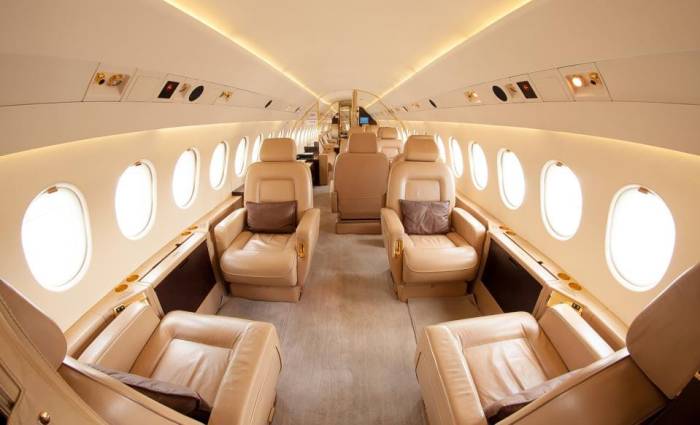
The private aviation industry is constantly evolving, driven by technological advancements, changing consumer preferences, and a growing demand for personalized travel experiences. This section explores the emerging trends shaping the future of private flights, highlighting the impact of technology and predicting the industry’s growth trajectory.
The Rise of On-Demand Charter Services
The increasing popularity of on-demand charter services is a significant trend in private aviation. These services offer greater flexibility and convenience compared to traditional fractional ownership or jet cards. Passengers can book flights on short notice, choosing their departure and arrival times and destinations.
This flexibility caters to the needs of business travelers, families, and individuals seeking bespoke travel experiences.
- Increased Accessibility: On-demand charter services make private flights accessible to a broader audience, removing the barriers associated with traditional ownership models.
- Cost-Effectiveness: By sharing the cost of a flight with other passengers, on-demand charter services can be more cost-effective than traditional private jet ownership, particularly for infrequent travelers.
- Technological Advancements: Digital platforms and mobile applications streamline the booking process, making it easier for passengers to find and book flights online.
The Integration of Technology
Technology is revolutionizing the private aviation industry, enhancing operational efficiency, improving passenger experiences, and creating growth opportunities.
- Advanced Flight Management Systems: These systems optimize flight paths, reduce fuel consumption, and enhance safety by providing real-time data and predictive analytics.
- Smart Cabin Technologies: Private jets are increasingly incorporating features such as in-flight entertainment systems, high-speed Wi-Fi, and personalized climate control, enhancing the comfort and convenience of passengers.
- Blockchain and Digital Identity: Blockchain technology is being explored to improve transparency and security in the industry, while digital identity solutions enhance passenger verification and streamline check-in processes.
Predicting the Growth of Private Aviation
The private aviation industry is expected to experience continued growth in the coming years, driven by several factors:
- Growing Affluence: The increasing number of high-net-worth individuals and growing global wealth are fueling demand for private flights.
- Business Travel Demand: The need for efficient and secure travel for business executives and entrepreneurs is driving the adoption of private aviation.
- Evolving Travel Preferences: Passengers are increasingly seeking personalized and seamless travel experiences, favoring the flexibility and privacy offered by private flights.
Sustainable Aviation
The industry is also focusing on sustainable practices to reduce its environmental impact.
- Biofuels and Sustainable Aviation Fuels (SAF): The development and adoption of biofuels and SAF are crucial for reducing carbon emissions in the aviation sector.
- Carbon Offsetting: Private aviation companies are increasingly implementing carbon offsetting programs to neutralize their emissions.
- Technology Innovations: Advancements in aircraft design and engine technology are contributing to fuel efficiency and emissions reduction.
Last Word
In an increasingly demanding world, private flights offer a compelling alternative to commercial air travel. With their unmatched convenience, personalized service, and unparalleled flexibility, private flights empower travelers to reclaim their time and embrace a higher standard of travel. Whether you’re seeking a seamless business trip, a luxurious family vacation, or an unforgettable adventure, private aviation presents a world of possibilities, allowing you to travel with style, efficiency, and absolute control.
Comments are closed.